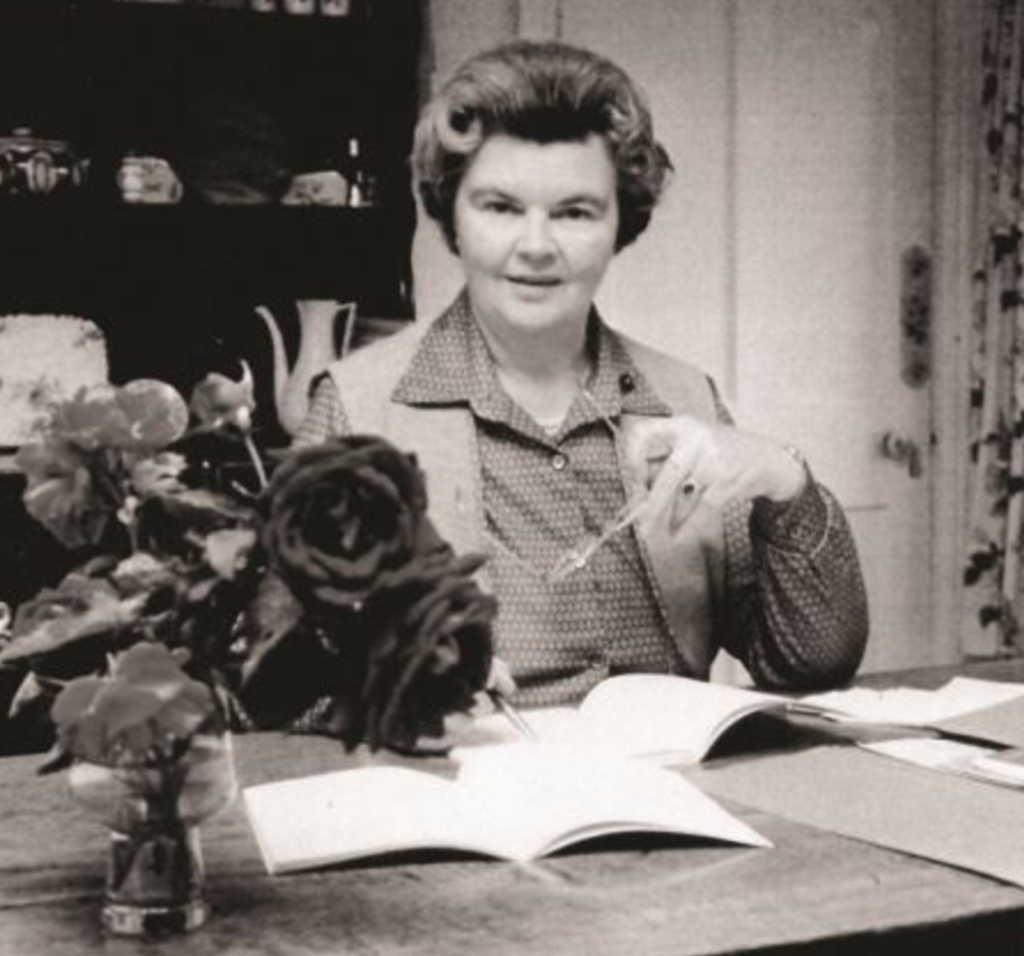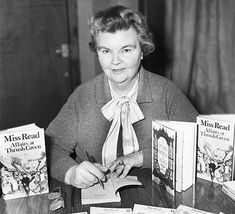The name Dora Saint might not ring a bell, but her pen name, Miss Read, is synonymous with heartwarming stories about idyllic English villages. A schoolteacher by profession, Dora Saint’s literary career blossomed later in life, and her tales of gentle humor, quirky characters, and the beauty of rural life continue to charm readers worldwide.

From Dora Saint to Miss Read: A Life in Letters
Born Dora Jessie Shafe in 1913, Saint’s early life was shaped by a move to the English countryside at a young age. This shift, prompted by both her own ill health and her mother’s, instilled a deep love for the rural landscape that would permeate her future work. After attending Homerton College, Saint embarked on a career as a schoolteacher, a profession that not only provided her with firsthand experience of village life but also inspired characters and themes in her writing.
Saint’s literary journey began in the 1940s, but it wasn’t until the 1950s that she adopted the pen name Miss Read. The name itself held a special significance – a tribute to her mother’s maiden name. Her debut novel, “Village School,” published in 1955, introduced readers to the fictional village of Thrush Green. This charming community, with its eccentric residents and the gentle rhythm of village life, became the setting for a series of novels that captured the hearts of readers.
The success of the Thrush Green novels led Saint to create another beloved village – Fairacre. Debuting in “Village Diary” (1980), Fairacre offered a similar setting but with a distinct cast of characters and a focus on the local school. Both Thrush Green and Fairacre transcended mere location, becoming microcosms of human experience, reflecting the joys, challenges, and complexities of everyday life.
A World of Miss Read: Characters, Themes, and Enduring Appeal
The enduring appeal of Miss Read’s work lies in her ability to capture the essence of village life. Her characters are not idealized; they are flawed, funny, and deeply human. From the formidable yet kind headmistress, Miss Clare, to the gossipy villagers and the mischievous children, Saint’s characters feel authentic and relatable.
Her stories are infused with a gentle humor that celebrates the eccentricities of life in a small community. Quirky traditions, village rivalries, and the foibles of human nature are all explored with a light touch, creating a sense of warmth and nostalgia.
Beyond the humor lies a deep appreciation for the natural world. Saint’s evocative descriptions of the English countryside – rolling hills, wildflower meadows, and cozy cottages – transport readers to a world of serenity and beauty. The changing seasons, the rhythm of nature, and the interconnectedness of humans and their environment are all woven into the fabric of her narratives.
While seemingly idyllic, Miss Read’s villages are not without their problems. Loneliness, loss, and the challenges of rural life are also addressed with sensitivity and understanding. Her characters grapple with real-life issues, offering readers a sense of connection and reminding them that challenges are universal.
The enduring popularity of Miss Read’s work is a testament to her ability to create a world that is both familiar and comforting. Her stories offer a sense of escape from the pressures of modern life, a reminder of the simple pleasures, and the importance of community.
Beyond the Novels: Miss Read’s Legacy
Miss Read’s literary influence extends beyond her novels. Her memoirs, such as “Time Remembered,” provide a glimpse into her own life and the experiences that shaped her writing. Additionally, several television adaptations have brought the world of Miss Read to the small screen, further expanding her reach and introducing her work to new generations.
The warmth and charm of Miss Read’s work continue to resonate with readers today. Her novels are translated into numerous languages, and book clubs dedicated to her work flourish around the world. Online forums and social media groups provide a platform for fans to discuss her characters, share their favorite moments, and celebrate the enduring legacy of Miss Read.
In conclusion, Dora Saint, better known as Miss Read, is a literary treasure. Her heartwarming stories, with their relatable characters, gentle humor, and celebration of rural life, offer a timeless escape. Whether seeking comfort, a connection to nature, or simply a reminder of the beauty of everyday life, Miss Read’s work provides a haven for readers of all ages. So, curl up with a Miss Read novel and be transported to a world of warmth, kindness, and the enduring magic of village life.

FAQ’S
Who was Dora Saint (Miss Read)?
Dora Saint was the pen name of Doreen Evelyn Staples (née Cole), a prolific British author who penned over 60 novels under the Miss Read moniker. Born in 1915, Staples’ life was relatively private. However, her passion for storytelling blossomed early, and she began submitting manuscripts in her twenties.
Why did she choose the pen name Miss Read?
Staples’ decision to adopt a pen name remains a delightful mystery. There are theories that “Miss Read” reflected her love for reading or perhaps a desire to maintain privacy while her career flourished.
What are the most popular Miss Read books?
Miss Read’s novels are known for their gentle humor, heartwarming characters, and idyllic settings. Some of her most popular works include:
Fairacre series: This endearing collection chronicles life in the fictional village of Fairacre, following the lives of its quirky residents – from the vicar and the schoolmistress to the postman and the shopkeepers.
Thrush Green series: Set in another charming village, Thrush Green, this series explores themes of friendship, community, and the simple joys of country life.
Village Christmas: This heartwarming novel captures the festive spirit of a village preparing for Christmas, filled with traditions, goodwill, and a touch of seasonal magic.
Bonus: Miss Read also wrote under the pen names Evelyn Fairfax and Juliet Shore.
What are the recurring themes in Miss Read’s books?
Miss Read’s novels are woven with themes that resonate with readers across generations:
Celebration of community: Her villages depict a strong sense of community, where neighbors support and care for one another.
Importance of kindness and compassion: Miss Read’s characters often display empathy and understanding, creating a world of warmth and acceptance.
Finding joy in the simple things: Her stories remind us to appreciate the beauty of everyday life, from nature’s wonders to the small pleasures of human connection.
The power of resilience: Miss Read’s characters face challenges but persevere with grace and humor, offering a comforting message of hope.
Are Miss Read’s books considered children’s literature?
While some of Miss Read’s earlier works were categorized as children’s books, her novels are generally enjoyed by readers of all ages. The simple prose and relatable themes make them perfect for young adults, while the depth of character and social commentary resonates with mature audiences as well.
Is there a Miss Read TV show or movie?
There haven’t been any major film adaptations of Miss Read’s works. However, several BBC television series, including “Fairacre” (1994) and “Thrush Green” (2003), brought the characters and villages to life on screen.
Where can I find Miss Read books?
Miss Read’s novels are widely available in print and audiobook formats. You can find them at bookstores, online retailers, and libraries.
What are some interesting facts about Miss Read?
A love of animals: Miss Read’s affection for animals shines through in her novels, with many furry companions gracing the pages.
Wartime experiences: Staples served as a driver during World War II, an experience that may have influenced her portrayal of resilience and community spirit.
A private life: Despite her literary success, Miss Read preferred a life away from the spotlight.
To read more, Click here